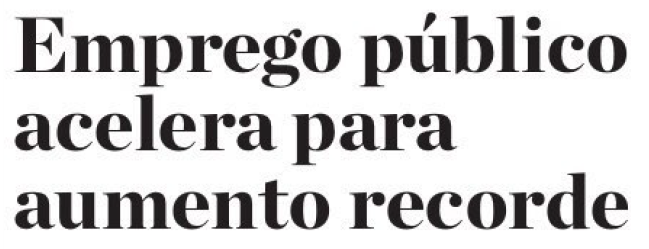Em Dezembro de 2011 escrevemos "It's not the euro, stupid! (parte IV)" e em Março de 2013 escrevemos "Acerca da desvalorização interna".
"In 1961, when Mr. Catini was only 22, he started his own business, making women’s shoes in his garage. His two younger brothers joined him. They bought leather from tanneries in Naples and Milan and made 50 pairs of shoes a day, selling their stock at street markets.[Moi ici: Há uns anos usei este gráfico para ilustrar o impacte chinês e o comeback do calçado]
.
They invested their profits into adding machinery and workers. By the 1980s, they had hired a designer from Milan, and their factory employed 70 people, selling its shoes in the United States and West Germany. His two children completed high school. He and his wife, who handled the factory’s books, bought a brick house on a hilltop looking out on the glittering sea.
.
But by the 1990s, danger was brewing. At trade fairs in Milan and Bologna, where he displayed his wares to foreign buyers, Mr. Catini noticed visitors from China taking photos of his designs. “Why are they coming to fairs and not buying anything?” he wondered.
The following decade revealed the answer. German customers were canceling orders, suddenly able to buy increasingly high-quality shoes at cut-rate prices from Chinese suppliers.
In 2001, China secured entry to the World Trade Organization, gaining easy access to markets around the globe. In subsequent years, exports by Italian footwear manufacturers plummeted by more than 40 percent.
In a desperate bid to survive, Mr. Catini reluctantly struck a deal to make shoes for a trendy Italian fashion brand. He borrowed about €300,000 ($331,000) and used the money to establish a factory in Romania to make the uppers for the new shoes at a fraction of his costs in Italy.Continua.
.
Soon, the Italian brand pressed him to lower his prices, asserting that it could buy the same shoes for half the cost in China. But the reduced price would not have covered his expenses.
.
We thought we were the best in the world. Everybody was making money.
.
One morning in early 2008, Mr. Catini gathered his employees on the factory floor. He had known many of them for decades. He had attended their weddings, their children’s christenings, funerals for their relatives. He had advanced them pay to allow them to buy homes. Now, he told them that they were all losing their jobs.
.
“I dream of this every night,” he says, his ruddy cheeks contorting in pain. “The workers were part of the family, from the first to the last.” He crushes his brown twill cap in his hands, prompting his wife to reach over and gently take it away.
.
In the nearby hilltop town of Montegranaro, some 600 footwear companies have dwindled to about 150, prompting locals to embrace the League and its harsh words about immigrants.
.
“When people do not feel secure economically, they cannot stand the fact that guarantees are given to people who come from abroad,” says Mauro Lucentini, a League member who holds a seat on Montegranaro’s council."
Trecho retirado de "How the Rise of Chinese Textile Manufacturing in Italy Fuelled the Far Right".
































